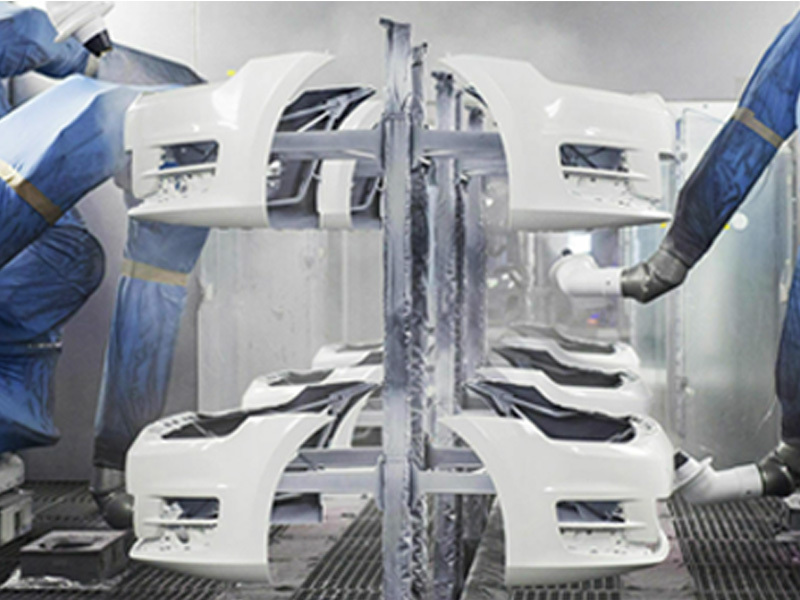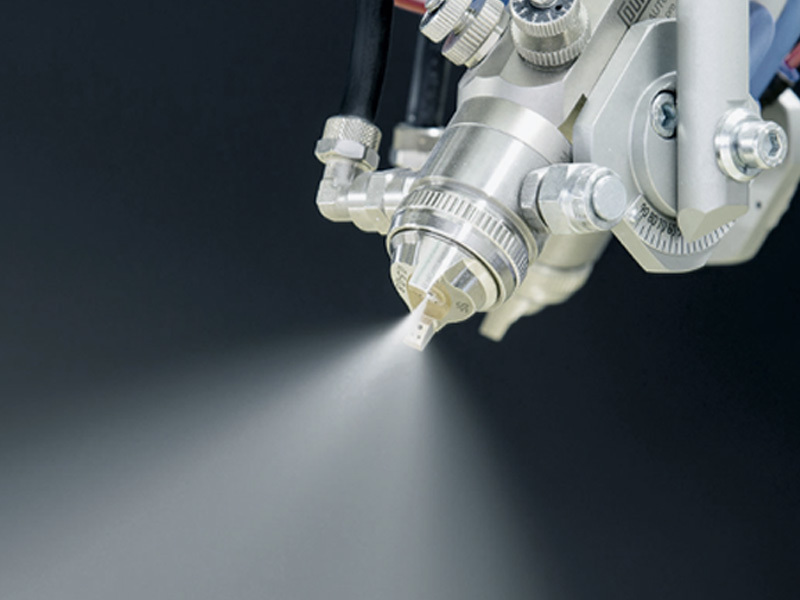Revolutionizing PCB Production with Automatic Circuit Board Solder Mask Spray Equipment
Release time:
2025-07-02
Revolutionizing PCB Production with Automatic Circuit Board Solder Mask Spray Equipment Table of Contents 1. Introduction to PCB Production 2. The Importance of Solder Mask in PCB Manufacturing 3. Challenges with Traditional Solder Mask Application Methods 4. Overview of Automatic Circuit Board Solder Mask Spray Equipment 5. Key Benefits of Using Automatic Equipment 6. The Technology

Revolutionizing PCB Production with Automatic Circuit Board Solder Mask Spray Equipment
Table of Contents
- 1. Introduction to PCB Production
- 2. The Importance of Solder Mask in PCB Manufacturing
- 3. Challenges with Traditional Solder Mask Application Methods
- 4. Overview of Automatic Circuit Board Solder Mask Spray Equipment
- 5. Key Benefits of Using Automatic Equipment
- 6. The Technology Behind Automatic Spray Equipment
- 7. Applications of Automatic Solder Mask Spray Equipment
- 8. Future Trends in PCB Production and Solder Mask Technology
- 9. Frequently Asked Questions
- 10. Conclusion
1. Introduction to PCB Production
The production of Printed Circuit Boards (PCBs) has seen significant advancements over the years. As the backbone of modern electronic devices, PCBs facilitate electrical connections and provide mechanical support for components. The increasing complexity and miniaturization of electronic devices demand more sophisticated processes in PCB manufacturing. One critical component of PCB production is the application of solder mask, which plays a vital role in protecting the circuitry and ensuring the durability of the board.
2. The Importance of Solder Mask in PCB Manufacturing
Solder mask serves multiple essential functions in PCB manufacturing. It acts as a protective layer that prevents solder from bridging between conductive traces, thus avoiding short circuits. Additionally, solder mask provides insulation, protects against environmental factors, and enhances the overall aesthetics of the PCB. Choosing the right solder mask material and application method can significantly impact the quality and reliability of the finished product.
3. Challenges with Traditional Solder Mask Application Methods
While traditional methods of applying solder mask, such as screen printing and manual application, have been widely used, they come with several challenges. These methods can be time-consuming, labor-intensive, and prone to human error. Inconsistent application thickness can lead to defects, affecting the performance of the PCB. Moreover, manual methods often result in longer production cycles, increasing costs and limiting the scalability of operations.
4. Overview of Automatic Circuit Board Solder Mask Spray Equipment
Automatic circuit board solder mask spray equipment is designed to address the challenges posed by traditional application methods. Utilizing advanced technologies, these systems automate the solder mask application process, ensuring uniform coverage and precise thickness. The equipment typically includes features such as programmable settings, real-time monitoring, and integrated drying systems, which enhance efficiency and consistency in production.
5. Key Benefits of Using Automatic Equipment
The adoption of automatic solder mask spray equipment brings several advantages to PCB manufacturers:
5.1 Increased Efficiency
By automating the application process, manufacturers can significantly reduce the time required for solder mask application. This leads to faster turnaround times and increased production capacity.
5.2 Enhanced Precision
Automatic spray systems ensure a uniform application of solder mask, reducing the risk of defects caused by human error. This precision is crucial in the production of high-density PCBs.
5.3 Cost Savings
Although the initial investment in automatic equipment may be higher than traditional methods, the long-term savings on labor costs, material waste, and production delays can be substantial.
5.4 Improved Quality Control
Modern automatic solder mask spray systems often come equipped with advanced monitoring features. These systems can detect inconsistencies in real-time, allowing for immediate adjustments and minimizing the chances of defects.
6. The Technology Behind Automatic Spray Equipment
Automatic solder mask spray equipment utilizes various technologies to achieve optimal results. Key features include:
6.1 Advanced Spraying Techniques
Modern spray systems employ precision nozzles and adjustable spray patterns to ensure thorough coverage of the PCB. This adaptability allows manufacturers to cater to different board designs and sizes.
6.2 Integrated Drying Systems
Effective drying is crucial after solder mask application. Many automatic equipment units come with integrated drying solutions that utilize UV light or heated air, ensuring the solder mask cures quickly without compromising quality.
6.3 Programmable Controls
User-friendly interfaces and programmable settings allow operators to customize the spray parameters based on specific production requirements. This flexibility enhances operational efficiency and product consistency.
7. Applications of Automatic Solder Mask Spray Equipment
Automatic solder mask spray equipment is utilized in various applications across the electronics industry:
7.1 Consumer Electronics
From smartphones to laptops, consumer electronics require high-quality PCBs with precise solder mask applications to ensure functionality and reliability.
7.2 Automotive Industry
With the increasing complexity of automotive electronics, the demand for reliable PCBs has surged. Automatic solder mask spray equipment ensures that automotive PCBs meet stringent quality standards.
7.3 Medical Devices
In the medical field, the reliability of electronic components is paramount. Automatic solder mask application provides the necessary protection for PCBs used in life-saving devices.
7.4 Aerospace and Defense
Aerospace and defense applications require the highest levels of quality and durability. Automatic solder mask spray equipment helps meet these rigorous demands.
8. Future Trends in PCB Production and Solder Mask Technology
As technology continues to evolve, the PCB manufacturing process is expected to undergo further transformations:
8.1 Smart Manufacturing
The integration of IoT and AI in PCB production will enhance automation, data collection, and process optimization, leading to smarter manufacturing practices.
8.2 Eco-Friendly Materials
The demand for sustainable practices is driving the development of eco-friendly solder mask materials that minimize environmental impact without compromising performance.
8.3 Enhanced Customization
Future equipment may offer even greater customization options, allowing manufacturers to tailor solder mask application processes more precisely to meet specific client needs.
9. Frequently Asked Questions
9.1 What is the primary advantage of automatic solder mask spray equipment?
The primary advantage is increased efficiency through automated processes, leading to faster production times and reduced labor costs.
9.2 Can automatic spray equipment handle different types of solder masks?
Yes, many automatic solder mask spray systems are versatile and can accommodate various solder mask materials and viscosities.
9.3 How does automatic spray technology improve quality control?
Automatic systems often include real-time monitoring capabilities that allow for immediate adjustments, ensuring consistent application quality.
9.4 Is the initial investment in automatic equipment worth it?
While the upfront cost may be higher, the savings in labor, material waste, and increased production efficiency typically justify the investment over time.
9.5 Are there specific maintenance requirements for automatic solder mask spray equipment?
Regular maintenance is essential to ensure optimal performance. This includes cleaning the nozzles, checking the calibration, and replacing worn components as needed.
10. Conclusion
The evolution of PCB production techniques, particularly the adoption of **automatic circuit board solder mask spray equipment**, represents a significant leap forward in efficiency, precision, and quality. By embracing this technology, manufacturers can overcome the limitations associated with traditional application methods, ensuring their products meet the high standards required in today’s competitive market. As we look towards the future, continuous advancements in this field will undoubtedly shape the landscape of electronics manufacturing, paving the way for more innovative and reliable electronic devices.











